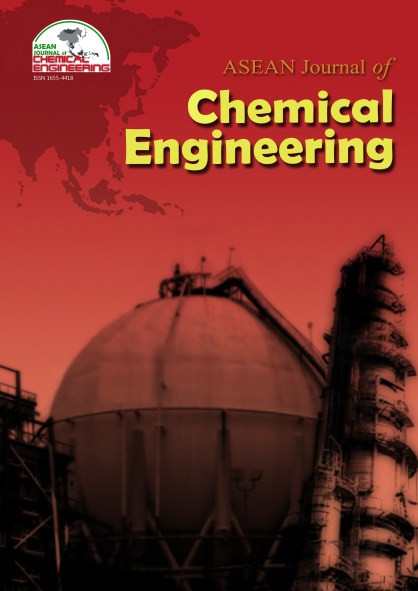Numerical Study of Fluid Dynamics in Suspension Culture of iPS Cells
Abstract
In a suspension culture of iPS cells, the shear stress generated during mixing is expected to promote differentiation of induced pluripotent stem (iPS) cells. The stress on the cells can be controlled by rotational rate and shape of impeller. However, it is difficult to optimize these operative parameters by experiments. Therefore, we have developed a numerical model to obtain the average and the maximum shear stress in two kinds of stirred tanks and an orbital shaking cylindrical container. The present results showed that the shear stress strongly depended on the type of mixing and lesser extent on the shape of the impeller. The average shear stress is larger in the shaking mode than that in the stirring mode. In contrast, the maximum shear stress is much smaller in the shaking than the stirring. These results suggest that stirring and shaking should be selectively used depending on the application
References
2. Ali, B.A., Borner, M., Peglow, M., Janiga, G., Seidel-Morgenstern, A. and Thevenin, D. (2015). Coupled computational fluid dynamics-discrete element method simulations of a pilot- scale batch crystallizer, Cryst. Growth Des., 15, 145155.
3. Issa, R.I. (1986). Solution of the implicitly discretized fluid flow equations by operator-splitting, J. Comput. Phys., 62, 4065.
4. Jing, L., Kwok, C.Y., Leung, Y.F. and Sobral, Y.D. (2016). Extended CFD-DEM for free-surface flow with multi-size granules, Int. J. Numer. Anal. Methods. Geomech., 40, 6279.
5. Olmer, R., Haase, A., Merkert, S., Cui, W., Palecek, J., Ran, C., Kirschning, A., Scheper, T., Glage, S., Miller, K., Curnow, E. C., Hayes, E.S. and Martin, U. (2010). Long term expansion of undifferentiated human iPS and ES cells in suspension culture using a defined medium, Stem Cell Res., 5, 5164.
6. Olmer, R., Lage, S., Selzer, A., Kasper, C., Haverich, A., Martin, U. and Tomoda, K. (2012). Suspension culture of human pluripotent stem cells in controlled, stirred bioreactors, J. Tissue. Eng., 18, 772784.
7. OpenFOAM; http://www.openfoam.com for the open source CFD tool box.
8. Otsuji, T.G., Bin, J., Yoshimura, A., Tomura, M., Tateyama, D., Minami, I., Yoshikawa, Y., Aiba, K., Heuser, J. E., Nishino, T., Hasegawa, K. and Nakatsuji, N. (2014). A 3D sphere culture system containing functional polymers for large-scale human pluripotent stem cell production, Stem Cell Rep., 2, 734745.
9. Rusche, H. (2002). Computational fluid dynamics of dispersed two-phase flows at high phase fractions, Ph. D. Thesis., Imperial College of Science, Technology and Medicine.
10. Salek, M.M., Sattari, P. and Martinuzzi, R.J. (2012). Analysis of fluid flow and wall shear stress patterns inside partially filled agitated culture well plates, Ann. Biomed. Eng., 40, 707728.
11. Sargent, C.Y., Berguig, G. Y., Kinney, M.A., Hiatt, L. A., Carpenedo, R.L., Berson, R.E. and McDevitt, T.C. (2010). Hydrodynamic modulation of embryonic stem cell differentiation by rotary orbital suspension culture, Biotechnol. Bioeng., 105, 611626.
12. Takahashi, K., Tanabe, K., Ohnuki, M., Narita, M., Ichisaka, T., Tomoda, K. and Yamanaka, S. (2007). Induction of pluripotent stem cells from adult human fibroblasts by defined factors, Cell., 131, 861872.
13. Zalc, J.M., Alvarez, M.M., Muzzio, F.J. and Arik, B.E. (2001). Extensive validation of computed laminar flow in a stirred tank with three rushton turbines, Chem. Eng. Sci., 47, 21442154.
Copyright holder for articles is ASEAN Journal of Chemical Engineering. Articles published in ASEAN J. Chem. Eng. are distributed under a Creative Commons Attribution-NonCommercial 4.0 International (CC BY-NC 4.0) license.
Authors agree to transfer all copyright rights in and to the above work to the ASEAN Journal of Chemical Engineering Editorial Board so that the Editorial Board shall have the right to publish the work for non-profit use in any media or form. In return, authors retain: (1) all proprietary rights other than copyright; (2) re-use of all or part of the above paper in their other work; (3) right to reproduce or authorize others to reproduce the above paper for authors’ personal use or for company use if the source and the journal copyright notice is indicated, and if the reproduction is not made for the purpose of sale.



